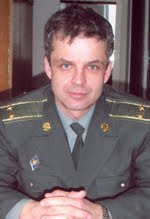
The National Museum of Folk Architecture and Life of Ukraine is situated on the edge of the ancient forest of Holosiyiv, near the village of Pyrohiv. Here, on the picturesque hills towering over the Dnipro river, which absorbs forests, valleys, gullies, ponds and mounds, the ancient sites still remain: Feofaniia, Pyrohiv, Kytaiiv, Tserkovshchyna, Siriakove, Horodyshche, Khotiv, Yarivtsi, Soloviove, Dohtiarka, Lytvynove, Fialkove. Historians claim that a church and caves older than even those in the Pecherska Lavra can be found here.
The Museum (also referred to as “Pyrohiv”) was designed as an architectural and landscape complex, that is to say an open air museum. According to the general layout, 400 architectural objects should be able to function on its territory, representing a complete cross-section of folk constructions from all regions of Ukraine. Today the exposition possesses over 300 monuments to folk architecture: dwellings, households, industrial and religious buildings... Its collections boast over 70,000 pieces: national wear, fabrics, furniture, working tools, pottery, casks, barrels, carpentry, work by blacksmiths, folk paintings, musical instruments, children’s toys, etc. This is one of the biggest museums in the world, and perhaps Ukraine’s most potent center for research, conservation and popularizing monuments to folk culture. It is a complex and multisectoral enterprise, as well as a research center integrated into the network of Ukraine’s National Academy of Sciences.
The first attempt to organize an outdoor museum took place in Norway in 1867, with a few village houses and a church being brought to specially allotted plot near Oslo. In 1891 the Swedes established a big park-museum Skansen in their capital Stockholm. The idea caught on, and there are now over two thousand open air museums like it in Europe alone. In the former Soviet Union there are as many as 40 of them. In Ukraine outdoor museums were established in Kyiv, Lviv, Uzhhorod, Pereiaslav-Khmelnytskyi, Chernivtsi, the village of Krylos (Halych raion, Ivano-Frankivsk oblast), and in Sarny (Rivne oblast).
































 Nowadays, in Rome, which is considered the Christian world’s capital, there are around 600 churches but the bell-ringers were replaced by recordings of melodies. New churches are often built without bells. It known that the bells were used for community needs, like guiding lost people in bad weather, informing citizens about disasters like fire, or for gathering the nation to defend its motherland.
Nowadays, in Rome, which is considered the Christian world’s capital, there are around 600 churches but the bell-ringers were replaced by recordings of melodies. New churches are often built without bells. It known that the bells were used for community needs, like guiding lost people in bad weather, informing citizens about disasters like fire, or for gathering the nation to defend its motherland. 








